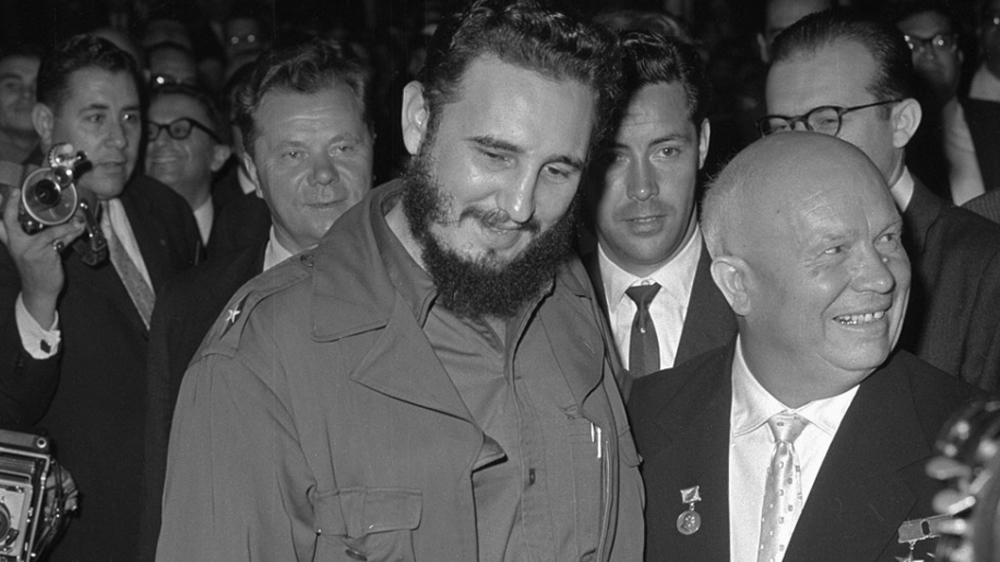The 13 Days of the Cuban Missile Crisis
Over 13 days in October of 1962, the United States and the Soviet Union came dangerously close to nuclear confrontation. Here is how the conflict played out in public and behind the scenes.
Day 1 – Tuesday, October 16, 1962
President John F. Kennedy and his top officials are briefed: Two days prior, a U-2 spy plane has photographed a buildup of Soviet missiles in Cuba, 100 miles off the coast of Florida. Almost the entire United States is now within reach of a nuclear strike. The officials debate their three options: an air strike to the missile sites, an invasion of Cuba, and a naval quarantine. A headline in The New York Times reads, “Eisenhower Calls President Weak on Foreign Policy.”

Day 2 – Wednesday, October 17, 1962
To keep options open, Kennedy orders military units to move to bases in the southeastern United States, closer to Cuba, while another U-2 reconnaissance flight reveals more missile sites. The president keeps his schedule, which includes meeting with the West German foreign minister, Gerhard Schroeder, and attending election rallies for Connecticut Democratic candidates. Unrelated to the Cuba issue, the White House releases a public statement urging the Soviet Union to reconsider plans to test a 50-million-megaton atomic bomb.
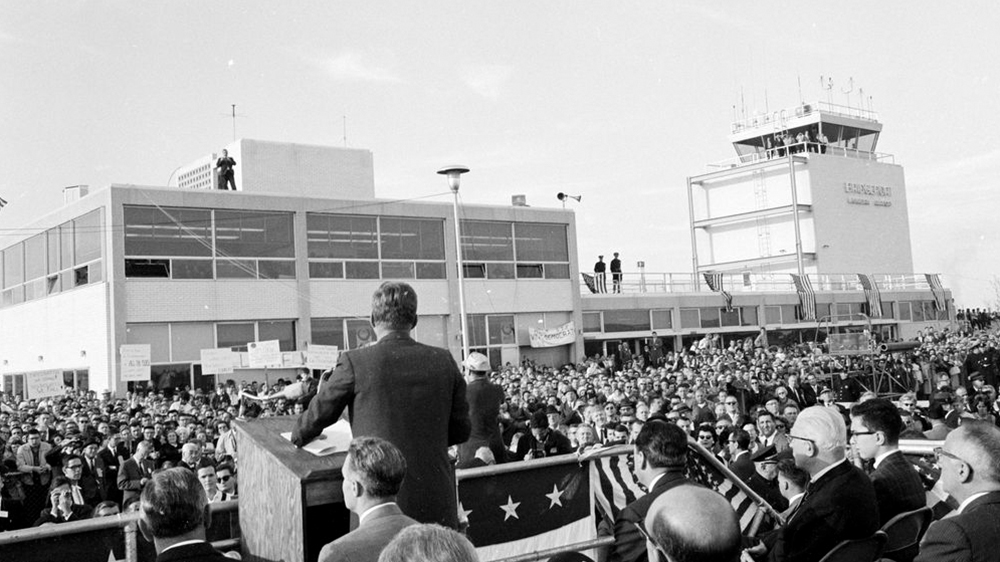
Day 3 – Thursday, October 18, 1962
President Kennedy has a previously scheduled meeting with Soviet Foreign Minister Andrei Gromyko and Soviet Ambassador Anatoly Dobrynin for two hours. The Soviets insist that any weapons in Cuba are defensive, and Kennedy doesn’t reveal his knowledge of the missile sites. The president says that the U.S. “planned no blockade of Cuba,” but behind the scenes, Kennedy and his top officials continue to weigh that option or an invasion.
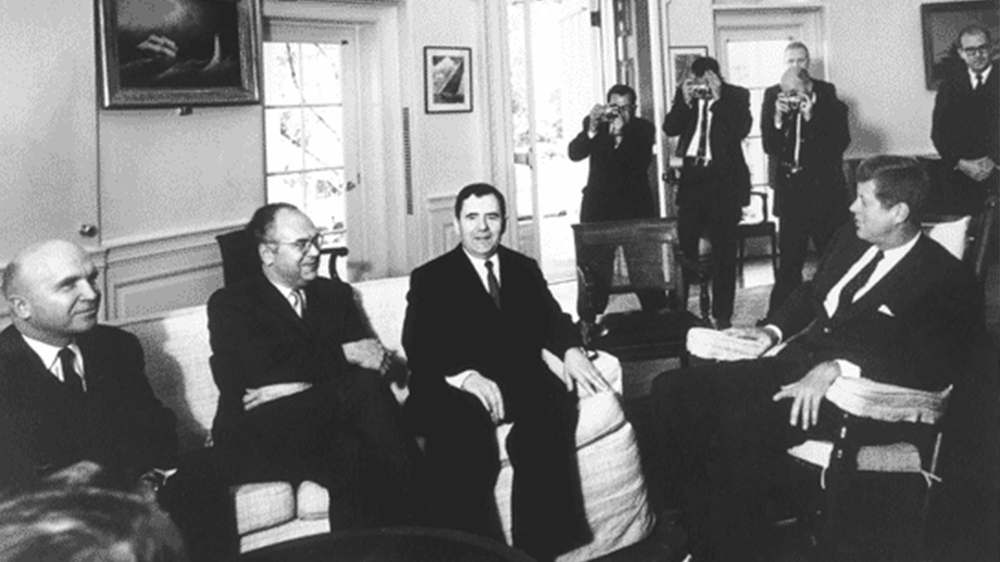
Day 4 – Friday, October 19, 1962
Kennedy gives speeches on behalf of Democratic candidates in Cleveland, at the Illinois State Fair Grounds, and to the dinner of the Democratic Party of Cook County. The national media’s focus remains on the Cold War tensions surrounding the new Berlin Wall and the U.S. military presence.

Day 5 – Saturday, October 20, 1962
Claiming he has a cold, President Kennedy returns to Washington D.C., where he holds a National Security Council meeting. According to the official minutes of the meeting, “the Council was informed that 16 SS-4 missiles, with a range of 1,020 nautical miles were now operational in Cuba and could be fired approximately 18 hours after a decision to fire was taken.” The president decides to institute a blockade by Monday, and his staff begins to draft a speech to the nation.
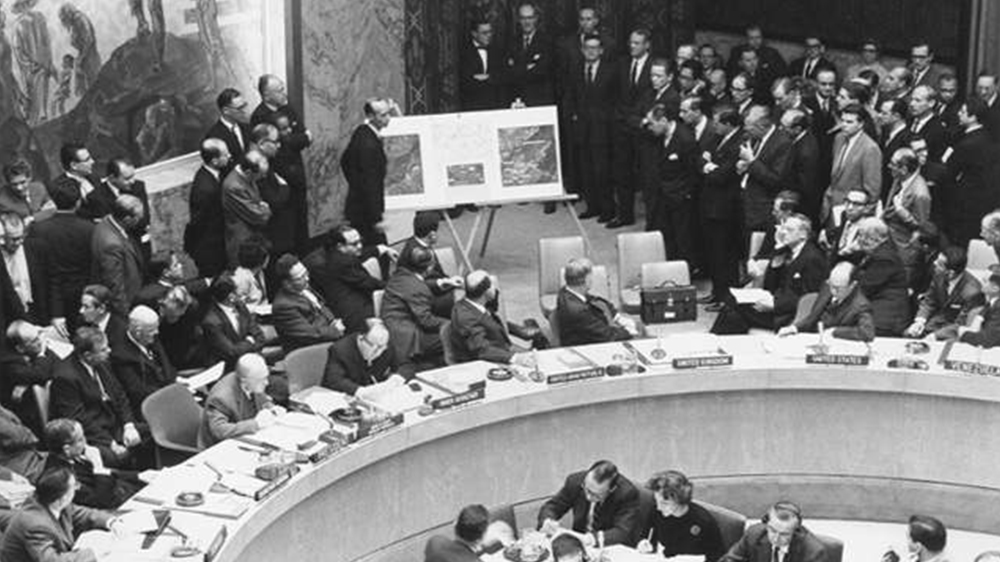
Day 6 – Sunday, October 21, 1962
President Kennedy attends Mass at St. Stephen’s Church with his wife Jackie. General Walter Sweeney of Tactical Air Command informs the President that an air strike cannot promise to take out all of the missiles in Cuba. The National Security Council meeting lasts hours. The Associate Press publishes an article: “U.S. Fires Long-Delayed Atom Blast Above Pacific.”
Day 7 – Monday, October 22, 1962
On Monday morning, Americans read newspaper stories detailing Navy and Marine Corps maneuvers off Florida’s coast, and mass speculation ensues. Kennedy formally creates his Executive Committee of the National Security Council (EXCOM) and briefs former presidents Hoover, Truman, and Eisenhower, his cabinet, congressional leaders, and British Prime Minister Harold Macmillan. Around 6 p.m. Secretary of State Dean Rusk notifies Ambassador Dobrynin what the country will learn when Kennedy addresses the nation on television at 7 p.m.: The U.S. will not tolerate Soviet missiles, and it is instituting a naval quarantine of Cuba.
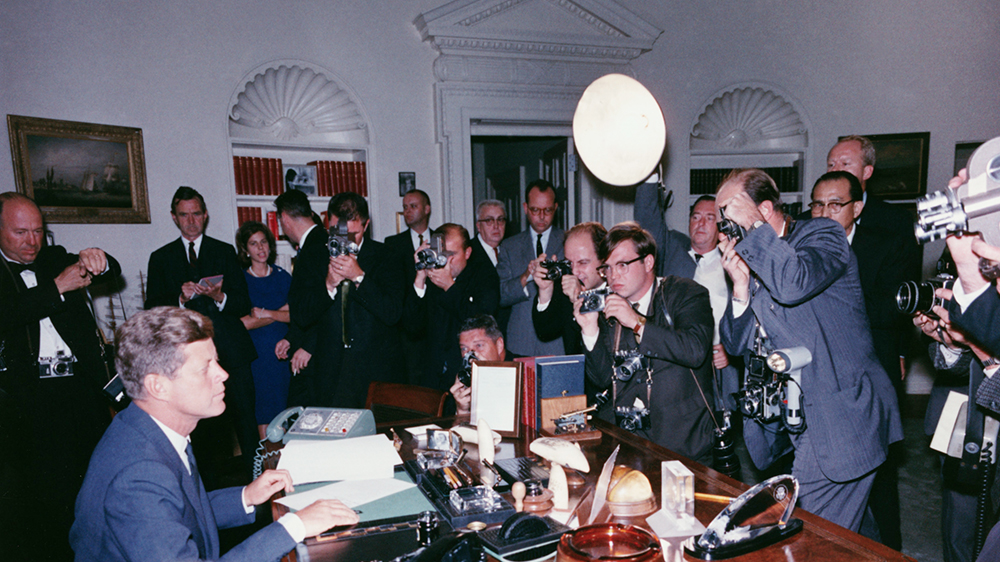

Day 8 – Tuesday, October 23, 1962
Twenty-five Russian ships are headed to Cuba as the U.S. Navy moves into position. The Organization of American States endorses the quarantine while U.S Ambassador to the United Nations Adlai Stevenson presents the country’s concerns before the U.N. Security Council. Attorney General Robert Kennedy meets with Ambassador Dobrynin at the Soviet Embassy to discuss options, but no deal is reached.

Day 9 – Wednesday, October 24, 1962
Soviet Premier Nikita Khrushchev responds to President Kennedy’s letter from Monday: “You are no longer appealing to reason, but wish to intimidate us.” During a meeting with EXCOM, Kennedy is alerted that Soviet submarines are also in the area near the Soviet ships.
Day 10 – Thursday, October 25, 1962
Some Soviet freighters turn around, but one oil tanker is let through the line after it is determined to contain only petroleum. At the U.N., Adlai Stevenson presents photographic proof of the missile sites and demands an explanation from Soviet Ambassador Valerian Zorin. Kennedy responds to Khrushchev’s letter with his own, accusing the Premier of the Soviet Union of giving false assurances regarding the shipments to Cuba. U.N. Secretary General U Thant suggests a suspension of actions, while Pope John XXIII urges rulers to prevent the “horrors of a war that would have tragic consequences such as nobody can foresee.”
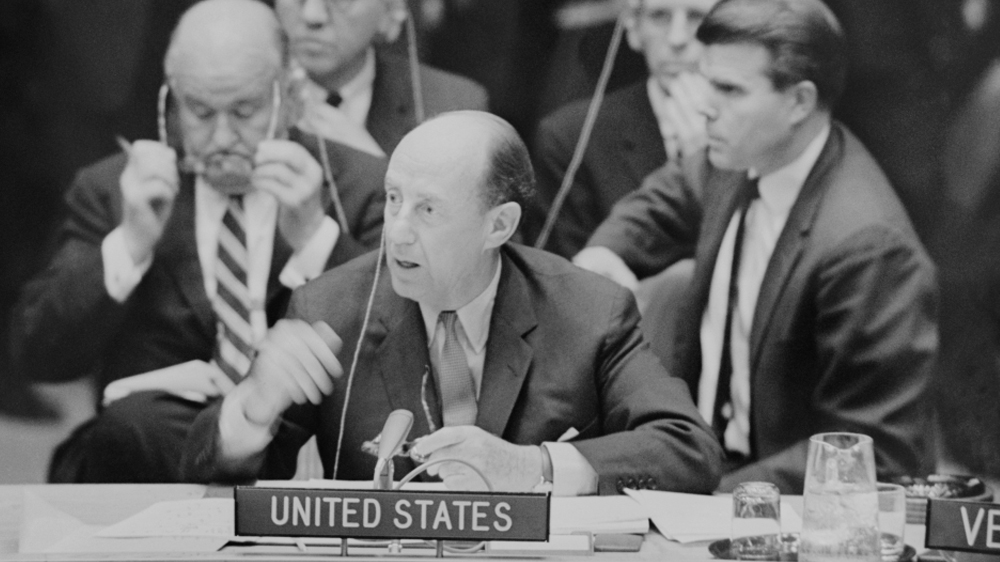
Day 11 – Friday, October 26, 1962
Construction of missile sites continues in Cuba, and U.S. officials become aware of Soviet bomber planes being uncrated and assembled. The Strategic Air Command is ordered to DEFCON 2, the second-highest level of alert. Khrushchev writes to Kennedy again, this time with an offer to remove missiles as long as the U.S. will not invade Cuba and end the quarantine. Aleksandr Fomin, the KGB station chief in Washington, brings a similar offer to ABC News Reporter John Scali. Meanwhile, Fidel Castro writes a letter to Khrushchev, urging a Soviet nuclear first strike on the U.S. if Cuba is invaded.

Day 12 – Saturday, October 27, 1962
After positive news the previous day, the U.S. suffers setbacks: U.S.A.F. Major Rudolf Anderson, Jr. is killed when his U-2 plane is shot down over Cuba; and, Khrushchev writes another letter, this time requiring the dismantling of the U.S. Jupiter missiles in Turkey. Kennedy decides to ignore Khrushchev’s second letter and has Robert Kennedy meet Ambassador Dobrynin to negotiate on the terms of Khrushchev’s first letter.
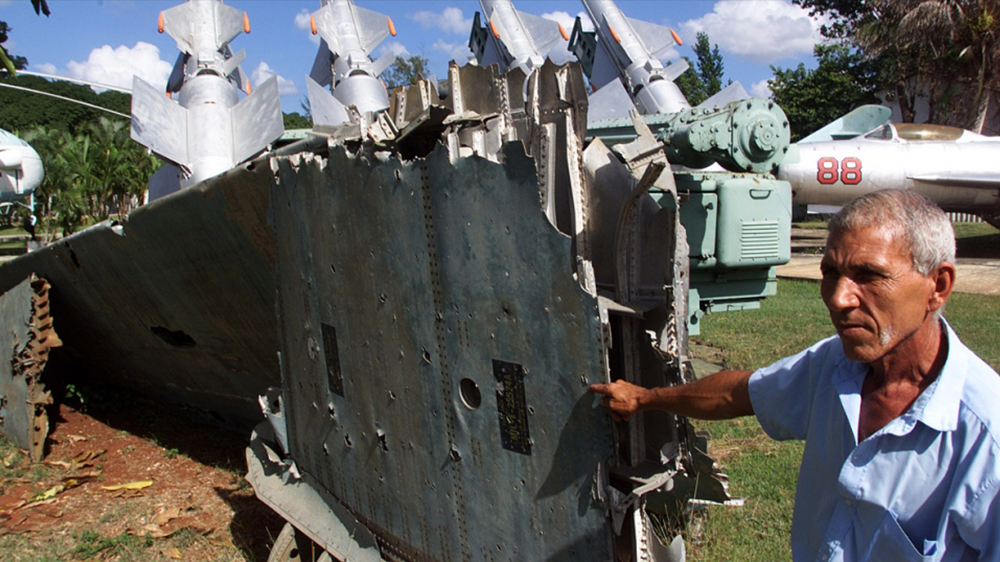
Day 13 – Sunday, October 28, 1962
Radio Moscow announces that the Soviet Union will remove the missiles under U.N. watch, and the U.S. ends the blockade days later as U.N. Secretary General U Thant flies to Havana to talk with the Castro Government. Months later, in April 1963, the U.S. removes the Jupiter missiles from Turkey as part of a secret agreement reached between Robert Kennedy and Dobrynin.
